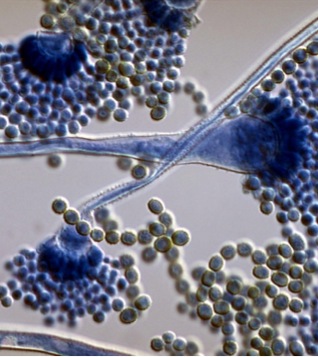I really didn’t think Bulletproof Coffee was going to take off like it did; and initially, I definitely didn’t want to write about it because I feel that sometimes, giving something negative publicity is still publicity and doesn’t necessarily strengthen my argument, but gives theirs more traction. However, when I saw Jill Coleman’s (@JillFit) status update, “I’m confused by Bulletproof coffee. The old fashioned version seems to do the trick just fine, no?” I realized that if Jill is confused, a lot of people are probably confused too. That, and I think anyone who reads my blog probably already knows about it, so really, I’m not giving them any MORE publicity than they already have.
[I should disclaim here that I am not a coffee drinker. I like tea, and it’s not that I haven’t ever had coffee or caffeine, but that it just never developed as my first preference for a warm beverage. So, take that for what you will.]
[Also, I should note that I’m not going to talk about the subjective claims of how amazing one feels after drinking this stuff. If it makes you feel more energized and nothing else does, it’s up to you to weigh the cost/benefit of it. I personally enjoy a spot of gin now and then. It makes me feel more social. (See: It works for me)]
I think there’s something inherently appealing to drinking something with ‘special properties’. Drinking (not necessarily alcohol) is the fastest way of getting something inside our bodies short of snorting or injecting. And I’ve heard of people snorting some pretty weird substances, but coffee with butter and triglycerides is not one of them. Maybe it’s the whole lore in fairy tales about magical potions, but I’ve noticed that liquids, in general (as opposed to solids or semi-solids) tend to be associated more with mystical properties. The only thing more powerful than a magical liquid is love, or rather, a kiss (not always mutually inclusive). Where’s that e-book?
I did this research as part of a talk I gave at Peak Performance called, “Kernels of Truth, and the Butter of Lies,” on how every fitness/nutrition myth can usually be traced back into a truth, but one that has been slathered so excessively with twists that it doesn’t taste like popcorn anymore. The only defense against the Butter of Lies is to find that Kernel of Truth.
There are basically three components to Bulletproof Coffee: Coffee, butter and medium-chain triglycerides.
Let’s tackle the butter first:
Butter
I have been unable to trace the history of po cha (or butter tea), which is the inspiration that the Bulletproof executive cites for why he started doing it. Admittedly, I didn’t try that hard, mostly because I think any practice that dates back to the 10th-13th centre CE is going to be largely historical/traditional/cultural in nature and trying to get at the epistemology of how the practice came to be is not likely going to clarify the issue of whether to add it to your coffee. The practice of drinking po cha, however, appears to be far more frequent than a single dose in the morning, for what that’s worth.
The interesting thing about the Bulletproof recipe is that it calls for grass-fed butter, because, “Grass-fed butter is much healthier than other butter. It doesn’t make cholesterol levels worse, it optimizes them!”
 It turns out, this has actually been studied. Werner LB et al. Effects of butter from mountain-pasture grazing cows or risk markers of the metabolic syndrome compared with conventional Danish butter: a randomized controlled study. Lipids in Health and Disease, 12: 99, 2013.
It turns out, this has actually been studied. Werner LB et al. Effects of butter from mountain-pasture grazing cows or risk markers of the metabolic syndrome compared with conventional Danish butter: a randomized controlled study. Lipids in Health and Disease, 12: 99, 2013.
I know! I can already hear it: The HILLS ARE ALIVE…WITH THE SOUND OF…
Sorry, I digress.
So, what exactly makes grass-fed butter healthier?
A Source of CLA
 Milk from grassfed cows is higher in CLA (conjugated linoeic acid), which is linked to a bunch of good things (but in my opinion has yet to really pan out; and the guys at examine.com agree). However, even if CLA does all of the things that the supplement companies want you to believe it does, there’s more than one kind of CLA. The one that is allegedly bioactive is the t-10, c12 isomer. The one that’s present in grass-fed butter is the c9, t-11 isomer and is apparently biologically neutral. So, no dice on the CLA
Milk from grassfed cows is higher in CLA (conjugated linoeic acid), which is linked to a bunch of good things (but in my opinion has yet to really pan out; and the guys at examine.com agree). However, even if CLA does all of the things that the supplement companies want you to believe it does, there’s more than one kind of CLA. The one that is allegedly bioactive is the t-10, c12 isomer. The one that’s present in grass-fed butter is the c9, t-11 isomer and is apparently biologically neutral. So, no dice on the CLA
A Source of Phytanic Acid
Phytanic acid is proposed to induce glucose uptake in the liver through a PPAR related pathway. Its levels are higher in grass-fed milk because of the chlorophyll in grass. Less sugar in the blood = good, usually. So, by extension, phytanic acid = good. More on this later, though really there’s no surprise ending in this blog entry.
So what happened in the trial?
The trial involved 38 people between 50 ahd 70 years of age with BMI<35. They were assigned to either grass-fed or conventional-fed butter. Milk was collected by the research team and made into butter (not store bought!) and phytanic acid was measured and found to be higher in the grass-fed milk. The butter was incorporated into buns and replaced part of the regular diet for 12 weeks
Total lipids, insulin, C-reative protein, glucose, and glucose tolerance test were measured.

(If there’s enough demand, I can do a full critique of this paper)
In the end, there were no meaningful differences between the two groups after 12 weeks. The grass-fed butter group did not have better cholesterol levels, nor did they have higher phytanic acid levels in their blood, despite the higher levels of phytanic acid in the milk.
Medium Chain Triglyercides
I’ve written about MCT’s and weight loss/fat loss before, so I’m not going to re-iterate the message that the addition of MCT’s to your diet can result in mild to modest fat loss too much. That’s not really the point that the Bulletproof folks make on their website anyways.
The claims they do make though:
1) Faster energy: This is a technical truth as MCTs do not require repackaging into chylomicrons to be transported in the blood. Therefore the time it takes for an MCT molecule to hit the target cell compared to an LCT is shorter. But try to prove that the energy that your cells are using are from that MCT molecule and not from say…an ever present store of adipose tissue and we’ll get a real conversation going.
2) Helps maintain healthy cholesterol levels: This has been quite well-studied and may be the only kernel in this entire blog post that isn’t covered in butter.
3) Lessens harmful bacteria, viruses and fungi (including molds): This effect has only been studied in rats with auto-immune kidney disease.
The Coffee
The concern with non-Bulletpoof coffee is that conventional coffee beans can have mold in them which produces toxins that are bad for you.
There are five criteria for picking the coffee for a bona fide cup of Bulletproof coffee:
1) No decaf coffee, as caffeine protects the bean from mold, and the decaf process occurs when the bean is green.
2) Never instant or cheap coffee beans, because they’re higher in caffeine because they need to defend against more mold
3) Grown in Central America as the beans are grown at higher altitude where mold is more scarce.
4) Single estate because…there’s a higher chance of mold contamination with a mix?
5) Wet-process drying because sun-dried coffee beans allow time for mold growth.
At last resort, the website says to go for an Americano because stem helps break down toxins.
So what are the toxins? They’re called aflatoxins.
Aflatoxin is indeed a toxin. It’s produced by a mold called Aspergillus flavus. Aspergillis is a mold that grows naturally in soil and cereal and plant crops. It’s everywhere. You’ve been living with it practically all of your life, just not in disease-causing quantities.
 Aspergillis can cause disease in humans–it’s called aspergillosis. Aspergillosis usually affects people who are immunocompromised and can cause what is called embolic disease (the Bulletproof folks link it to heart attacks and aortic infarctions). However, aspergillosis is caused by an overgrowth of the Aspergillis mold, not the toxin. If your coffee is causing aspergillosis, you have a totally different set of problems and no amount of coffee, bulletproof or not, is going to help that.
Aspergillis can cause disease in humans–it’s called aspergillosis. Aspergillosis usually affects people who are immunocompromised and can cause what is called embolic disease (the Bulletproof folks link it to heart attacks and aortic infarctions). However, aspergillosis is caused by an overgrowth of the Aspergillis mold, not the toxin. If your coffee is causing aspergillosis, you have a totally different set of problems and no amount of coffee, bulletproof or not, is going to help that.
Aflatoxin is also linked to liver cancer and hepatitis (inflammation of the liver), but only under the relationship with a pre-existing Hepatitis B infection (possibly requiring Hepatitis C co-infection). It’s also incredibly heat-resistant (I’m not sure the steam argument holds up here)
I’m not entirely sure how much aflatoxin is in a coffee brewed from a non-Central American, non-single estate, non-wet-process coffee. I kinda think that it’s not that much.
At the very least, Bulletproof coffee isn’t trying to turn something that isn’t a toxin (like sugar) into one. Aflatoxin is real. But I definitely think it oversells both the promise of the butter and MCT’s and the fear of aflatoxin. There _are_ kernels of truth in all of their claims, but this is a great example of how small kernels get coated and wrapped up in a package that makes them virtually untasteable. It also shows how the power of the narrative is not to be underestimated. There’s a “Science and Research” tab for every Bulletproof product, with no science or research; just claims.
You are going to die at some point. We all are. And while Western culture as a whole is on this hell-bent death-avoidance slant, it doesn’t mean that you have to be all caught up in it too. However, if you’re _that_ worried about aflatoxin even in those minute amounts possibly present in your non-Bulletproof coffee, then here is a list of things that can (and usually do) contain aflatoxin that you also cannot consume to be internally consistent with your goals of aflatoxin avoidance:
1) All grains (including quinoa, corn, and both “ancestral” and non-ancestral grains)
2) Legumes and seeds
3) Nuts (both ground and tree)
4) Nut butters
5) Peanuts and peanut butter (I put this separate because some people don’t make the link)
6) Any grain-fed animal or animal product, which, even if free-range, includes chicken and eggs.
Funny how that’s not mentioned on the Bulletproof site, isn’t it?
Protect your willpower.
The post Yummy (?) but not special Part II: Bulletproof Coffee appeared first on Evidence Based Fitness.


















